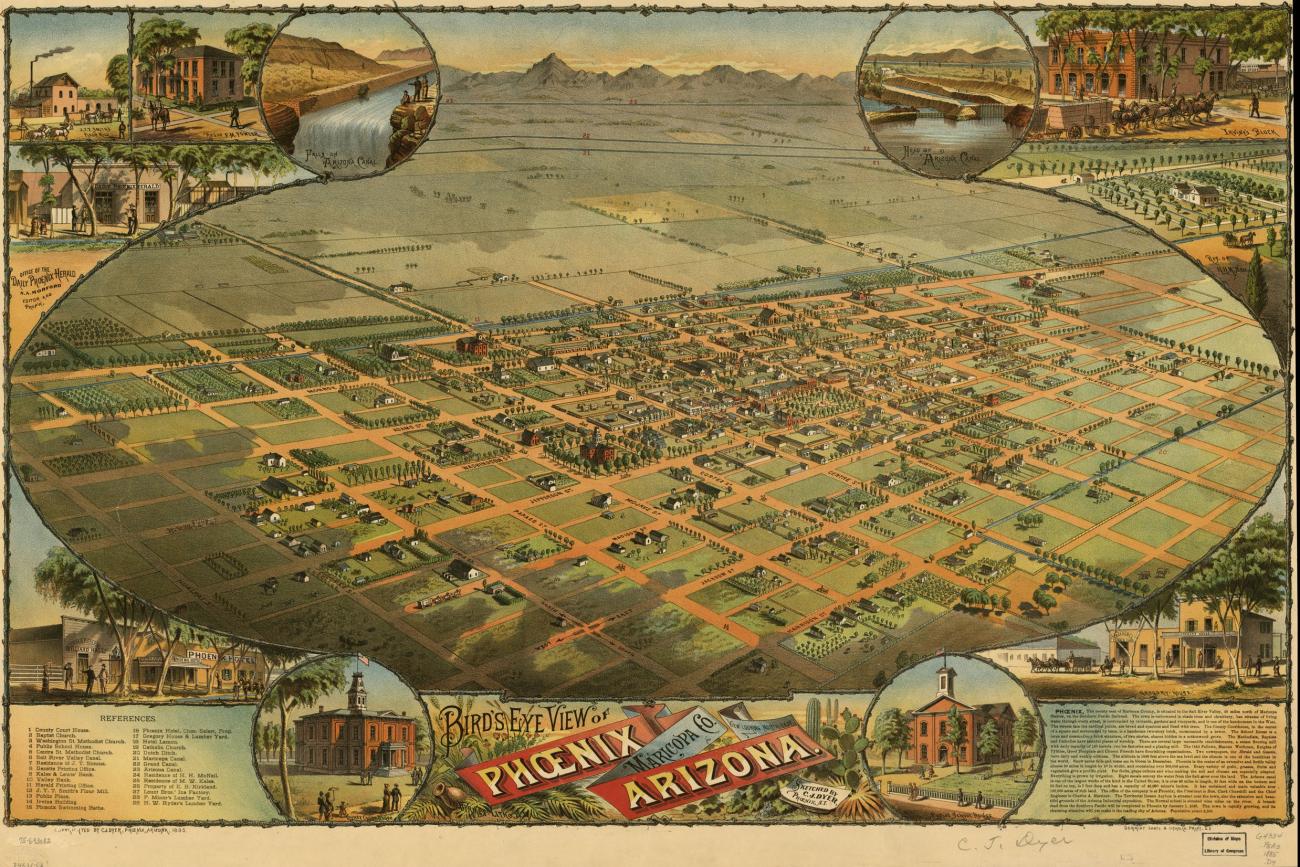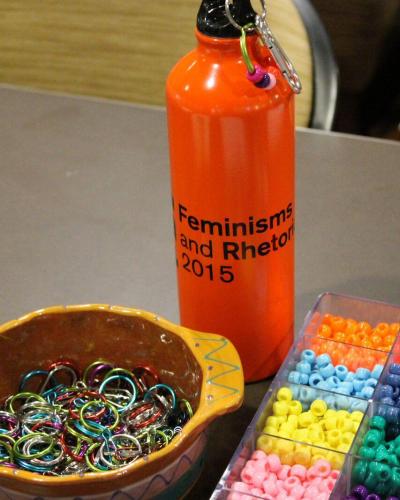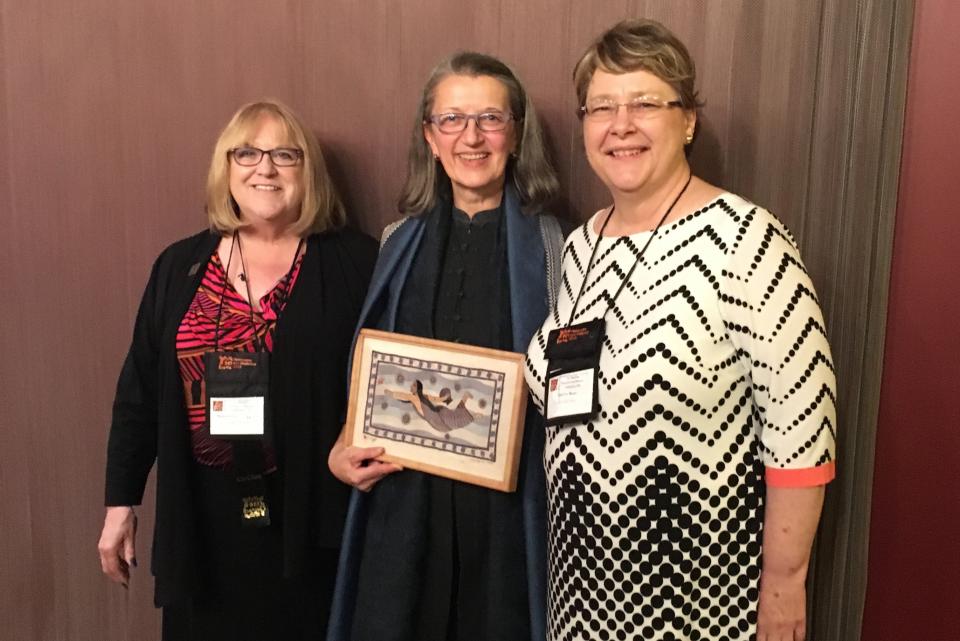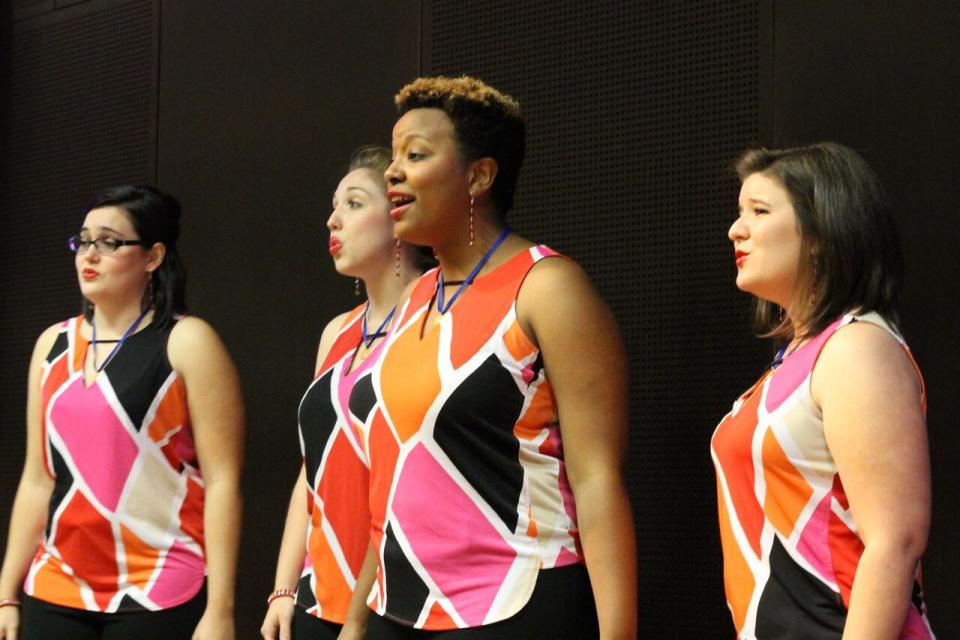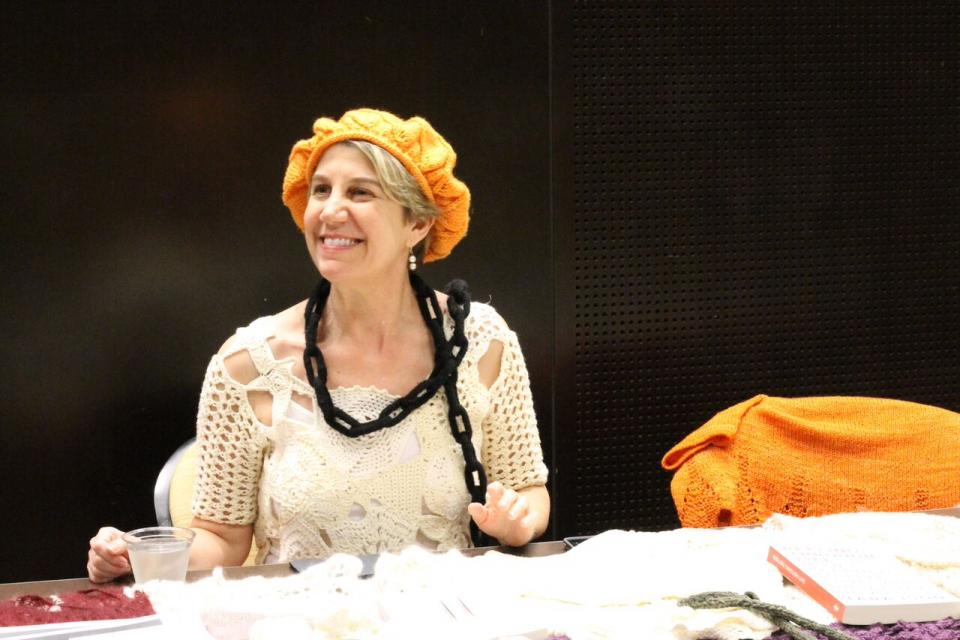Dialogue on Dialogue: Recap of FemRhet 2015
Editors' Note: From October 28-31, 2015, the ASU Department of English hosted the Feminisms and Rhetorics Conference at the Memorial Union on ASU's Tempe campus. This major international conference is presented every two years by the Coalition of Women Scholars in the History of Rhetoric and Composition (CWSHRC).
Themed "Women's Ways of Making," the conference engaged attendees of all genders in a dialogue about contributions by women to "maker" culture, challenging traditional notions of women as passive consumers.
In the conference's collaboratory spirit, following is a conversation between co-chairs Shirley Rose and Maureen Daly Goggin about the process and outcome of their work on the well-attended and highly successful conference.
Shirley Rose: It’s hard to believe that we’ve worked on the Feminisms and Rhetorics conference for nearly two and a half years. We started drafting our proposal to host the conference back in July of 2013! Thinking back to then, Maureen, what do you remember as the most compelling reasons we had for submitting a hosting proposal to the Coalition of Women Scholars in the History of Rhetoric and Composition?
Maureen Daly Goggin: As I recall, we both were encouraged because we so admire the work of the conference these past 20 years and that of the Coalition (CWSHRC). We valued an opportunity to design a conference program that would pay homage to the 10th biennial Feminisms and Rhetorics conference.
SR: Our brainstorming led to the theme of Women’s Ways of Making—a theme most appropriate for this anniversary year of Feminisms and Rhetorics. We had a great response to our call for proposals for nine different conference presentations of various kinds—the final count was 377 proposals, over 75 of which were multi-person presentations. No doubt the chance to visit the desert southwest at the end of October was appealing for many, but the focus of our call—scholarship on Women’s Ways of Making—obviously resonated with many people. Why is that, do you think?
MDG: I think the opportunity to research and speak on how women have not simply been passive consumers but have been productive in many unrecognized ways was particularly attractive to scholars from a variety of different disciplines.
Our final registration count was over 400. We heard from a few people who were unable to attend, but nearly all of our registrants were here for a least one day, if not for the whole four days of the conference. When you consider all of the planning involved in putting the content of program together as well as the challenges of making the best use of time and spaces, was there anything about the way the program actually turned out that surprised you?
SR: It was gratifying to see how many of the full panels we put together from single presentation proposals turned out to have thematic coherence. I think we ended up putting some scholars in conversation with one another who might not have otherwise known about each other’s work. One other pleasant surprise was Thomas Rickert’s presentation for the joint keynote address with the Western States Rhetoric and Literacy Conference, which was running concurrently with Feminisms and Rhetorics 2015 in the Memorial Union. Rickert’s discussion of the primordial handprints in the caves of Europe made such a great connection to the image of the hands in our conference publicity materials that it helped build a bridge between the two conferences.
MDG: We both gave a lot of our time and energies to work on the conference over the past two years. What are some of the outcomes of the work that made it most worthwhile?
SR: What made it worth the time and effort is the chance to start and develop a scholarly discussion on topics and ideas about women that need to be explored. It was also gratifying to bring people to our campus and show off our program and our institution. Personally, I received satisfaction from performing with the Scottsdale Chorus in our “Women’s Ways of Making Music” teaching performance for conference participants. I liked being able to bring together my professional scholarly work and my personal passion for singing. I had thought I might be very nervous singing for professional friends and colleagues, but in fact I had even more fun than usual.
MDG: What was the most difficult part of hosting the conference for you?
SR: My heart broke a little every time we heard from someone who said he or she was not going to be able to come to the conference after all because of lack of funding or illness—their own or a family member’s. That’s an aspect of a conference one is only aware of as a Chair. I was very grateful to the College of Liberal Arts and Sciences' Humanities Division for funding ten graduate travel awards of $100 each for graduate students from around the country, because I know it made a big difference for those ten students.
MDG: What was the best feature of the conference for you?
SR: It’s too hard to single out anything as the “best.” But one thing I especially liked was the focus on mentoring. Mentoring is a signature activity of the Coalition, one they’ve strategically developed over the years through many of their activities and events. This year, the Coalition President Jenn Fishman inaugurated formal “workshop” sessions for senior scholars to work with junior scholars on writing projects and set aside the first couple of hours of the program on the first day to make a special time and place for that work. The first Lisa Ede Mentoring Award was presented to Cheryl Glenn at the conference and we also acknowledged the mentors of the graduate students who received travel awards.
One other way mentoring was featured was when the C’est La Vie quartet, all young women who are students at ASU, sang the barbershop style arrangement of “For Good” from Wicked! A couple of lines from the song—“Because I knew you… I don’t know if I’ve been changed for the better, but I have been changed for good” articulate the powerful and lasting impact of mentoring.
I was glad I had the chance to attend quite a few concurrent sessions despite all of the little tasks of chairing the conference. I heard some great papers, but the concurrent session that was most generative for me was one where we were given five minutes to use pipe cleaners, paper plates, and glitter paint to represent a theoretical concept. I chose “performativity.” I know that activity sounds infantile, but an exchange it prompted with another person in the session was very profound. Did you attend any of these interactive or “making” sessions and did you feel they realized our initial vision for them?
MDG: I attended a wonderful demonstration/teaching session where the first participant played a video on the social/cultural history of knitting as she knitted silently under the video screen. We had a chance to see samples of her work and books on knitting as we listened to its history. The next participant spoke on the meaning of macramé and then taught us how to do a knot in macramé, and helped us to make our own pieces. Both presentations were inspiring as they grounded the individual ways of making in the socio-cultural significance of each.
SR: Ames Hawkins’s podcast project Vox Fabri, Vox Dea, in which she did quick interviews with conference attendees asking them about their ways of making, included a question about lasting memories from previous Feminisms and Rhetorics conferences. What do you think conference participants will most remember about FemRhet 2015 in five or ten years from now?
MDG: I believe the responses will be varied as there were a number of highlights. Overall, respondents will remember the excitement, energy, and innovation of the conference. Specific highlights would no doubt include the chorus performance by the five-time international champions Scottsdale Chorus, the documentary Threads, the performance/demonstration of various arts and crafts at lunch, the excursions to South Mountain and Desert Botanical Garden, the innovative presentation styles—especially the teaching, demonstrating, collaborating, and garden sessions, the keynote address by an activist artist, and the generosity of all of the mentors who conducted individualized workshops and office hours. Of course, there are other features that made this conference a unique experience; let me name just one—the invitation to bring handwork to the conference to do at and between sessions.
SR: Our two conference documentarians—Steven Hopkins, who made a video, and Jennifer Russum, who created an archive of nearly 100 photos--both included in their projects many images of people knitting, crocheting, or doing other handwork. Angela Haas, one of our plenary speakers, posted a message on Facebook saying she’d been waiting a long time for an invitation to bring needlework to an academic conference. Why do you think our encouragement to participants to bring their projects received such an enthusiastic response?
MDG: The invitation to bring handwork projects fit both the theme of the conference—Women’s Ways of Making—and the innovative presentation styles. My guess is that there are those in FemRhet who are crafters but do so out of the public eye for fear of being singled out as succumbing to oppressive forces. Of course, the charge itself is ironic since handwork became gendered and devalued by patriarchal forces. Certainly, some women (not to mention children and men) have been oppressed by the needle but others have loved and treasured the work. By taking the needle back, women can recoup its position as a fulfilling art. The encouragement to bring projects to the conference helped to call attention to the importance of such work.
SR: Another “best thing” about Co-Chairing the conference was getting to work with you, Maureen. Thanks for everything you did to inspire our volunteers, keep us organized, and make our conference participants welcome and engaged.
MDG: Thank you, Shirley for all you contributed to make this such a successful event; it was a joy to work with you.
Image 1: Beading supplies used by FemRhet 2015 participants. / Photo by Jennifer Russum.
Image 2: Maureen Daly Goggin (left) and Shirley Rose (right) pose with Cathy Stevulak, director of 'Threads,' a documentary film shown at the conference. / Photo by Jennifer Russum.
Image 3: The C'est La Vie quartet, all young women who are ASU students, sang the barbershop style arrangement of 'For Good' from Wicked at the conference. / Photo by Jennifer Russum.
Image 4: ASU English professor Tara Ison, a fiction writer and avid knitter, responded to the call for participants to bring their handwork projects. / Photo by Jennifer Russum.
For more information and discussion, see "Feminism conference aims to challenge gendered notions of 'making'" published in ASU Now, October 26, 2015.
